HYPNOS HOUR WITH CHELSEA WOLFE // Red Bull Radio


HYPNOS HOUR WITH CHELSEA WOLFE: DRONE
A selection of international songs from the percussive and drone realm. Tinariwen, Huun-Huur-Tu, Grouper, Swans and more.
Episode premieres Nov 20 at 3:00pm PST
The Official Site


A selection of international songs from the percussive and drone realm. Tinariwen, Huun-Huur-Tu, Grouper, Swans and more.
Episode premieres Nov 20 at 3:00pm PST

Chelsea Wolfe will be performing at Roskilde Festival July 4-5 , 2018 – tickets/info: http://www.roskilde-festival.dk/tickets


This fall Chelsea Wolfe brought her cinematic, haunting doom to stages across North America with support from industrial-hardcore duo Youth Code.
Photographer and videographer Nick Fancher joined the bands for a couple of stops on the trek, including their shows at El Club in Detroit and The Metro in Chicago, and captured candid moments with the musicians onstage and off.
Full story and video via REVOLVER.
“Shooting in unconventional locations is my thing, so improvising ‘studios’ to shoot backstage at the El Club and The Metro was nothing new,” says Fancher, who is known for creating compelling, surreal studio-quality portraits in any location. “I try to cater each portrait session I do to the artist sitting in front of me. In Chelsea’s case, her music has had a great impact on my life and makes me feel big feelings, so I really immersed myself in her work, letting it dictate the colors and techniques I used in the shoot. I ended up going a more psychedelic route, using a lot of red and green.”
Scroll through the gallery below for Fancher’s searing portraits of these two compelling heavy-music acts. You can watch his documentary, Grey Days, on his time on the tour above
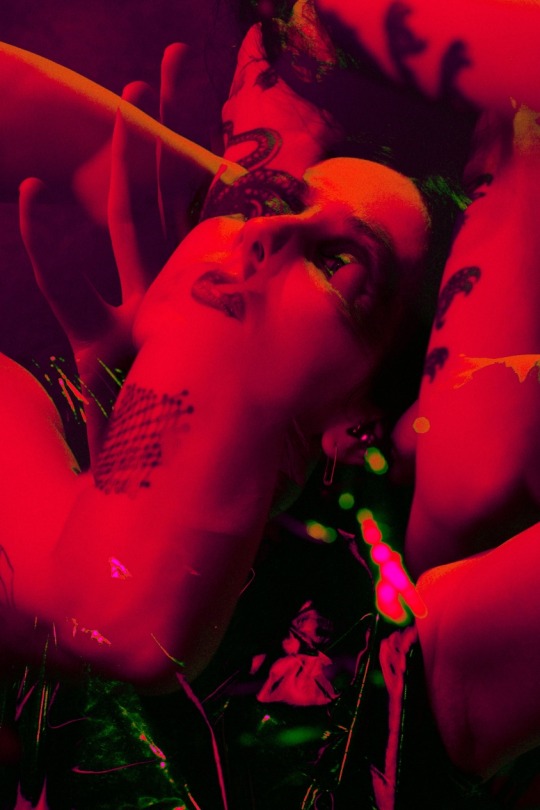
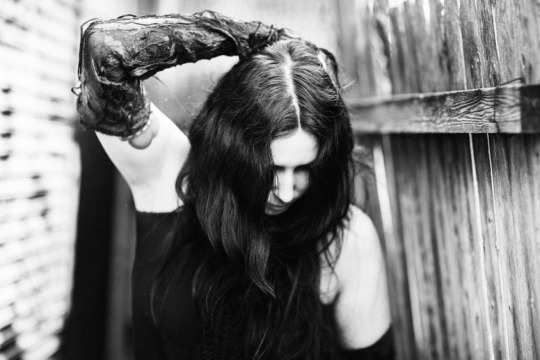
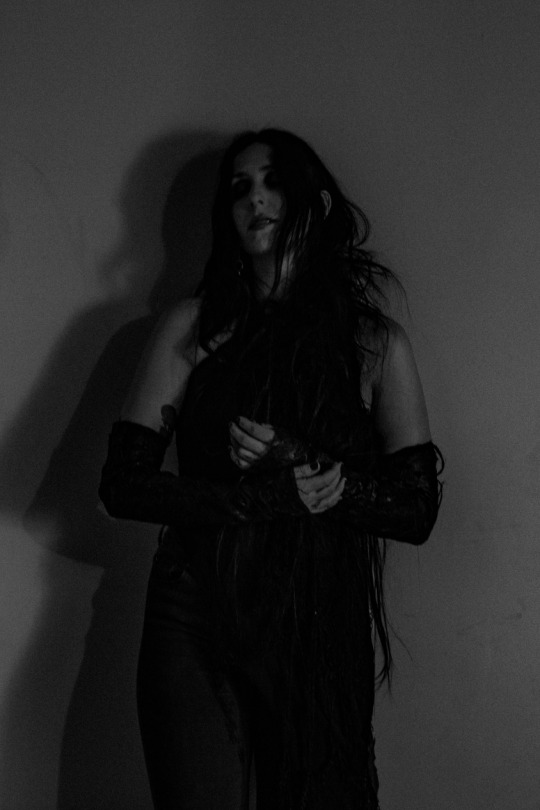
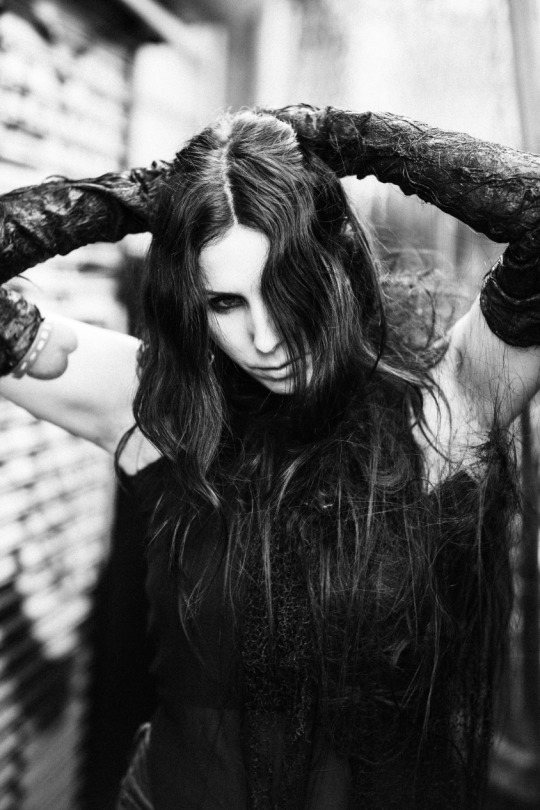


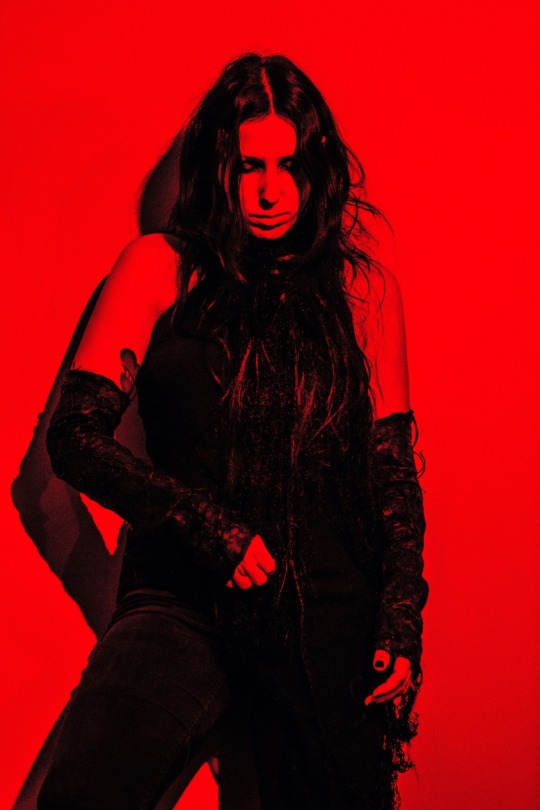
This fall Chelsea Wolfe brought her cinematic, haunting doom to stages across North America with support from industrial-hardcore duo Youth Code.
Photographer and videographer Nick Fancher joined the bands for a couple of stops on the trek, including their shows at El Club in Detroit and The Metro in Chicago, and captured candid moments with the musicians onstage and off.
Full story and video via REVOLVER.
“Shooting in unconventional locations is my thing, so improvising ‘studios’ to shoot backstage at the El Club and The Metro was nothing new,” says Fancher, who is known for creating compelling, surreal studio-quality portraits in any location. “I try to cater each portrait session I do to the artist sitting in front of me. In Chelsea’s case, her music has had a great impact on my life and makes me feel big feelings, so I really immersed myself in her work, letting it dictate the colors and techniques I used in the shoot. I ended up going a more psychedelic route, using a lot of red and green.”
Scroll through the gallery below for Fancher’s searing portraits of these two compelling heavy-music acts. You can watch his documentary, Grey Days, on his time on the tour above




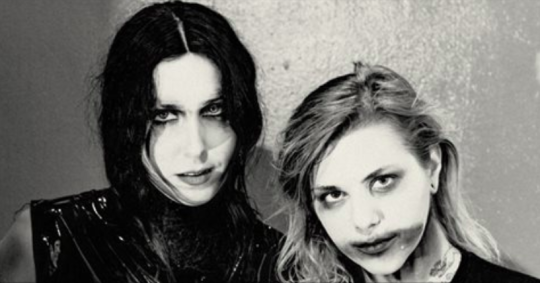
Chelsea Wolfe and Youth Code’s recent joint U.S. tour brought together two of heavy music’s most compelling contemporary forces, a union that Revolver was not about to miss. Photographer and videographer Nick Fancher tagged along for two stops on the trek, in Detroit and Chicago, capturing the musicians in candid moments onstage and off, soundchecking, applying their show makeup, test-driving instruments at a music store and planning future psychedelic experiments on the tour bus late at night. The result is an intimate portrait of life on the road.
Via Revolver
Chelsea Wolfe and Youth Code‘s recent joint U.S. tour brought together two of heavy music’s most compelling contemporary forces, a union that Revolver was not about to miss. Photographer and videographer Nick Fancher tagged along for two stops on the trek, in Detroit and Chicago, capturing the musicians in candid moments onstage and off, soundchecking, applying their show makeup, test-driving instruments at a music store and planning future psychedelic experiments on the tour bus late at night. The result is an intimate portrait of life on the road.
Full length video on Revolver


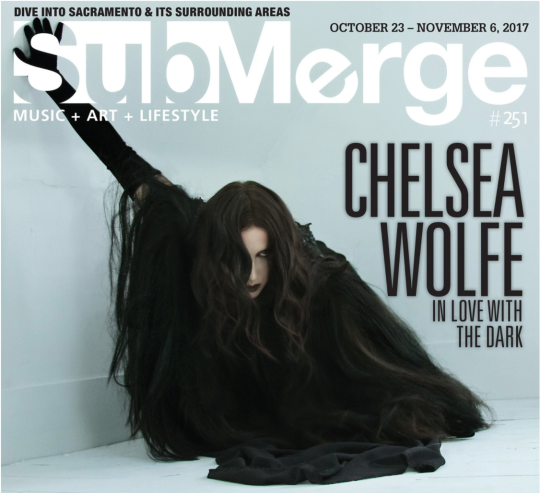
Scratch the surface of your being long enough and you’ll fall through into the abyss, a non-world without end, without up or down. Stripped of all context, it is a place where one is left prey to all the wraith-ish antagonists of the psyche; to survive here, one must not only battle them, but create the very terrain on which to wage one’s battles.
It is a space Chelsea Wolfe, raised in Roseville and Sacramento, has returned to time after time in her work, from the charred sparseness of Apokalypsis (2011) to the poisoned synth melodies of Pain is Beauty (2013) and the stormy, distorted depths of Abyss (2015). Taken as a whole, her stylistic arc is a gradually seething sojourn beyond the veil, gathering momentum and intensity, leading to the elemental fury and charged intimacy of her latest album, Hiss Spun (released Sept. 22, 2017). Tagged over the past few years with everything from “goth” to “doom-metal,” Wolfe’s heavy aesthetic is grounded in delicate songwriting and haunting, siren vocals—half-lullaby, half-lament—which cut through the smoke and fire of her most abrasive songs. It’s no wonder she’s managed to simultaneously rivet the gaze of the criticosphere while cracking the Billboard 200 with her last two releases.
Full article via Submerge.

Hiss Spun, while emerging clearly from Wolfe’s previous meditations on themes dark and dreamlike, and the contrast between turmoil in the landscape and within the psyche, is the most scourgingly personal of her artistic statements thus far.
She herself has described it as having an element of exorcism, and the suggestion of traumas corporeal and noncorporeal surge furiously to the surface of the lyrics at times. Such things can be gleaned by the listener; they refuse to be borne out in commonplace description, perhaps, but it is clear enough that they are used here as raw material to be sublimated through artistic excision. Against the clinical white background of the album cover (inspired by Wolfe’s visits in her youth to sleep research facilities) she crouches, not so much against the coming purge but to the task of making pain express itself at her bidding. Song titles like “Vex,” “Strain,” “Welt” and “Scrape” underline the volatility of the subject matter, as if a reactor were needed to contain it all.
Outside of the psychological underpinnings of her work, Wolfe is an artist who rocks in the most brutal, primordial sense of the term. Further amping up her distorted grandeur by utilizing additional guitar and vocal work from Queens of the Stone Age’s Troy Van Leeuwen and Isis’ Aaron Turner on Hiss Spun, Wolfe’s succeeded in illuminating her ties to a grand tradition of soul-searing, head-banging music. If anyone can pull together the current demand for brutal emotional honesty and the newfound appreciation for the roar and hiss of black metal in 2017, it’s Chelsea Wolfe.
Fellow Sacramentans will have the chance to experience Wolfe at her latest creative height alongside pulse-shattering fright industrialists Youth Code at Ace of Spades on Nov. 3, 2017.
Just in the first couple listens, I get the feeling that Hiss Spun has a lot to do with destruction—not in the sense of an apocalyptic end, but a destructive creation, reordering, making and unmaking. Did this play a big part in the work?
While I was writing this album, there was a lot I needed to finally heal from: my own self-destruction and ill-health, my past and memories. There is a running theme in all my music of becoming stronger from getting through the difficult times—the forest needing the fire to regenerate—and it definitely continued on Hiss Spun.
You’ve said Hiss Spun is a host of small words and phrases with large meaning. What mindspace were you in to allow these terms to slowly gather together?
There are some keywords throughout that guide the album, and tie things together that may not otherwise seem connected. I was in a bad state while writing some of this album, but allowed myself to just be a mess and open up; allowed whatever needed to come out musically or lyrically to flow.
Listening to your discography in order, there is a clear building in anthemic intensity from one album to the next. Is this mostly the means you have at your disposal as you progress, a build in confidence, a rediscovery of influences?
A build in confidence as I get older yes, and a rediscovery of influence—especially on Hiss Spun. Each album I make has its own catalyst, and for this one it was the reunion of my friend and drummer Jess Gowrie and I. We had a band in Sacramento years ago called Red Host, and she really taught me a lot about being in a band, being a good front-person, and just turned me onto a lot of great, heavy music. After I left to pursue my own project, there was seven years of separation. We didn’t see each other all that time but were pulled back together about two-and-a-half years ago. As we became friends again it was clear that our musical chemistry wasn’t finished, so we started writing songs together. Those songs became the beginnings of Hiss Spun.
Do you have any favorite films that fuel your visual input and leak into your music? If you could re-score a favorite film of yours, what would it be?
The Seventh Seal was an early influence for me. I saw it and then read Ingmar Bergman’s autobiography The Magic Lanternand was intrigued by his use of contrast and shadow. But also just the mood and concept of that film—the character of Death followed me for many years. The album cover for my first album, The Grime and the Glow, was in tribute to that, shot by my friend Jessalyn Wakefield. As for re-scoring a favorite film, I don’t know. My favorites already have such great soundtracks—Encounters at the End of the World, Cold Mountain, Cry-Baby. I’d like to score something totally new.
Faith and spirituality seems to be on the wane, but our willingness to discuss and tackle trauma and the burdens we have as humans seems to have grown. Do we still need a connection to the supernatural in our lives? How can it help us?
Finding a connection to the self is very important these days. Sometimes the deepest spirituality can be found inward. Once you know yourself, you can be of use to others.
While making this album, I heard you got back into popular alternative artists from the ‘90s like Nine Inch Nails and Marilyn Manson. Around that time, it felt like there was a larger place for the willfully transgressive and “raw” nearer to the heart of popular music. Do you think we might be heading that way again in music as a whole?
Jess and Ben [Tulao, guitarist] and I would jam and write songs at my place, and then head to the dive bar down the street and play late ‘90s/early 2000s Nine Inch Nails, Soundgarden, Manson, Deftones and Queens of the Stone Age on the jukebox. I’d love to see that kind of music in a more present way again. Like on SNL, for example, you rarely see rock bands anymore. And there’s not a lot of room for it on the radio either.
I often find the verge between sleeping and waking, whether by day or night, is a really fertile wellspring for ideas—good and bad. Do you find this useful in your work? And is there a way to make bad dreams/bad imaginative content “work” to benefit you?
I’ve been inspired by that state of mind for almost my whole life, without even realizing it most of the time. When I was a kid I had insomnia and bad night terrors. My parents took me to a sleep research facility where I was hooked up to all sorts of monitors and meant to fall asleep in a hospital bed in a small white room, to find what was wrong with me. That actually became visual inspiration for Hiss Spun as well, in the album cover and in the video for “16 Psyche.” Anyway, as I got older, I started having sleep paralysis regularly, but my version was not to be paralyzed, just waking up and the characters/shapes from my dreams were still in the room with me, often moving toward me, so I’d lash out or scream. It takes a while to move on from that haziness, and it would follow me into my day as I wrote new music. I still deal with bouts of insomnia sometimes and sleep paralysis. I’m not sure it’s something that ever goes away.
You’ll be coming up through NorCal and specifically Sacramento toward the tail end of fall. Is this your favorite time of year? What is your ideal natural setting?
Fall and winter are definitely my favorite times of year, yes. Where I live now it snows in the winter and that quiet is unmatchable. I plan to spend this winter doing psychedelic experiments on myself and working on songs for my next album. Even though I’ve spent a lot more time in Sacramento lately since I moved back to Northern California, I haven’t played a show there since 2012 so I really look forward to coming back and seeing many friends and family!
It’s been a while, so be sure to give Chelsea Wolfe a warm welcome when she returns to melt our faces at Ace of Spades (1417 R St., Sacramento) on Nov. 3, 2017, at 7:30 p.m. with special guests Youth Code and Screature. Tickets are $22.50 and can be purchased through Aceofspadessac.com.
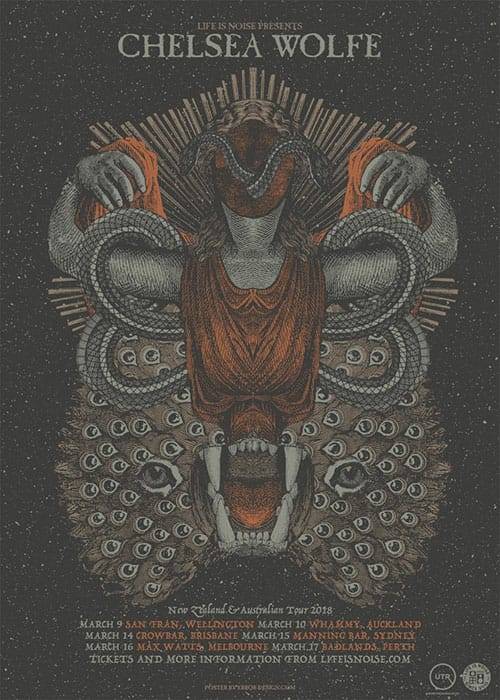
Mar 09 Wellington, NZ @ San Fran
Mar 10 Newton, NZ @ Whammy Bar
Mar 14 Fortitude Valley, AU @ Crowbar
Mar 15 Camperdown, AU @ Manning Bar
Mar 16 Melbourne, AU @ Max Watt’s
Mar 17 Perth, AU @ Badlands
Ticket info HERE.



The word ‘artist’ is used with witless abandon in music, but with Californian songwriter Chelsea Wolfe it feels wholly appropriate.
An originator and creator, over five albums she has constructed an intricate, dark body of work, one capable of crossing vast spaces, from gothic folk to black metal, while still feeling part of the same awe-inspiring aesthetic.
2015’s Abyss saw the Sargent House-signed songwriter develop a cavernous dynamic presence through gigantic, dystopian riffs, all contrasted with a tortured Cocteau Twins vocal. Now she has returned with Hiss Spun – a record that bathes in the bleakness of the current global outlook and delves ever deeper into musical extremes.
Produced by Kurt Ballou and featuring Queens Of The Stone Age’s Troy Van Leeuwen, it’s her heaviest album to date and something of a black mirror record – one that points aggressively at our ugliest tendencies and states: ‘what hath man wrought?’ or in 21st century terms: ‘look at this gigantic shit storm’.
We spoke to Chelsea about Hiss Spun, what it was like working with Troy Van Leeuwen and Kurt Ballou and the primordial origins of white noise…
This album was produced by Kurt Ballou at his GodCity studio in Salem, Massachusetts during the winter months. It really feels like you can hear that snow-quieted landscape on the likes of Vex or Two Spirit. How did that surrounding impact you and, by extension, the record?
The sense of the cold, quiet outside contrasted with the hissing radiators of the warm interiors is reflected on the record
“Yes, I think the sense of the cold, quiet outside contrasted with the hissing radiators of the warm interiors is reflected on the record. One of the reasons I wanted to record in Salem is because I fell in love with Kurt’s studio last year when I was there working on Converge Blood Moon.
“Sometimes a building has no effect on the recordings, but sometimes it becomes a character in it. I’d say the GodCity building played a big role in this record. The building has three levels: the basement dungeon where much of the drums were recorded, the middle studio area where all the guitars were recorded, and then the upstairs apartment and vocal room. So I thought of it almost like hell, limbo and heaven… Each level had its own personality.”
What are Kurt’s greatest strengths as a producer? What does he bring to a record or a session?
I knew Kurt Ballou would get the kind of metallic, almost engine-like tones I wanted for the bass and guitars
“I wanted to work with him because this record is very drum-focused, and I’ve been a fan of how he records drums for years. Also I knew he’d get the kind of metallic, almost engine-like tones I wanted for the bass and guitars.
“When it came to vocals, it was on me to conjure up what I wanted to, but I had already planned for that because I come into the studio really prepared and almost utilitarian-like: ready to work and push myself as far as I can.”
When we last spoke, you described the tensions – borne from two strong-willed creative characters – you had with John Congleton as being “immediate” but ultimately very positive on Abyss. What sources of tension were there on Hiss Spun? Was it required this time?
“This time is was more of an internal struggle… A lot of these songs are about my own memories, self-destruction, addiction and ill-health so I had to face that and try to become stronger than the songs I was writing; stronger than the memories.”
Troy Van Leeuwen joins you throughout Hiss Spun. Why did that stick? What made that playing/writing relationship such a successful one?
“I knew Troy would get the kind of weird, twisted emotions these songs needed and he did. He’s a great guy and one of my favourite guitar players.
“The main lead lines on Spun are Troy, and the leads on the choruses for 16 Psyche. I also left space for him on that song to do an aching lead part over the bridge. While he was playing I could feel my guts wrenching and it was perfect, so I asked him to keep going in that direction.
“He’s on a few others songs playing lead like Offering. Bryan [Tulao, guitarist] played lead on The Culling and Static Hum, both of which are my guitar songs, along with 16 Psyche. Ben [Chisholm] actually wrote a lot of the guitar for this album as well, like the main part for Spun, Vex, Particle Flux and Twin Fawn.”
In an interview with No Clean Singing you talk about finding “the right guitar and the right pedals and microphone” before writing. How early in your writing process do you consider tone? Why?
“When I’m initially writing and making demos I’m just going on instincts, but then once we’re in the studio I’ll hone it in and try to think about what’s right for the song – something deep or something more tinny and lo-fi.
“Kurt helped guide me on this journey, finding the right amps and pedals. I ended up just using this EarthQuaker [power amp distortion] pedal called Acapulco Gold, though; it weirdly fit on a lot of songs.”
What were your main guitars and amplifiers on the recordings? And how did you use them to get such sizeable distortion sounds?
The really big distortion tones on the likes of Twin Fawn came about because there are about six layers of guitars on those choruses
“There was an old Gibson amp I think Kurt uses on a lot of recordings that I used a lot… it just has that great vintage tone, but I was also drawn to his Klipp and used that a lot. The Gibson is an older one for sure. Basically Kurt set up a wall of amps and we just went through and tried them all until I was drawn to the sound of one. It ended up being those two!
Advertisement
“In general I don’t always know the technical details of all the gear I choose, I just collect guitars, amps and pedals that I like instinctually. I knew I wanted the guitar tones to sound really metallic on this album, almost like a motorcycle engine, so I was seeking that out on the amp journey.
“For guitars, I used a Fender Jazzmaster with a Randy Rhoads Dean neck, my Gibson 335s, and a borrowed classical. The really big distortion tones on the likes of Twin Fawn came about because there are about six layers of guitars on those choruses…”
A Fender Jazzmaster with a Dean neck is quite an unusual beast. What drew you to that instrument?
“That’s one of Kurt’s guitars – I don’t actually know the story behind it, but I saw it sitting amongst other guitars and was drawn to it. The neck instantly felt good in my hands and then Kurt told me it was the Randy Rhoads edition. I’m such a fan and had Crazy Train on repeat the year before, so it felt meant to be. Plugged into the Earthquaker Acapulco it was a great sound so I ended up using that combo a lot.”
What do you consider to be the most successful guitar moment on the album?
“16 Psyche was a riff I had kicking around for a year or so, and when I finally brought it to the band I wasn’t sure if anything would come of it, but right away we all had tons of ideas and it came together really quickly.
“Another moment is Ben’s guitar playing on Twin Fawn. He also played through that Klipp and layered the choruses maybe six times – I love the little feedback moments on the pauses, and the way the guitars and drums come together at the end of that song is one of my favourite parts of the album.”
Your press sheet interlinks one of the album’s central themes – global destruction – with the white noise that occurs throughout the album. Why do you think this sound is suited to the topic? What association does it hold for you?
I’ve had a strong affinity for white noise since I was a kid
“Carl Sagan said that 1% of TV and radio static is relic sound from the Big Bang. I think something about that connection to the origin is comforting, and I’ve had a strong affinity for white noise since I was a kid. I was talking more about confronting the chaos of the world with your own internal chaos – accepting the mess of yourself and finding strength through that.”
Advertisement
You’ve said that you want to write escapist music. We get that sensation with the likes of 16 Psyche. Where does the escapism come for you?
“I find a lot of freedom in music. I have my writing studio at home, so I can be in a place where I feel fully myself, and I can work and write at any hour of the day.
“Onstage, it’s taken me years to become comfortable, but my way of dealing is just to lose myself into the songs. Last year, while I was relocating back to Northern California, I was staying with family while I was in-between houses. I didn’t have a lot of personal space, so I ended up writing a lot in headphones, and was reminded of that sense of escapism in music, where you can totally tune out your surroundings and slip into a new world.”

“It seems like the world has been in tears for months, and then you remember it’s been fucked for a long time, it’s been fucked since the beginning. It’s overwhelming and I have to write about it.” In the face of this, do you think escapism is enough?
“No, of course not. I was being honest in saying that that’s sometimes how I deal, but I also strive to put a lot of reality about the world into my songs, and tell stories of people to honour them.
“Particle Flux, for example, has some lines in the choruses that were inspired by watching a short documentary about the refugee crisis coming out of Syria – seeing how these families were torn from their homes and sometimes torn apart, but still remaining so strong: mothers and fathers still trying to make their children smile and pushing on against the terrible situation they’re facing.
“I have a B-side coming out later this year which I’ll be donating the proceeds of to the UNHCR (UN Refugee Agency). There are so many refugee situations right now and they’re struggling to keep up funding for all of them.”
You have traditionally been portrayed as a shy character, but this album feels more overt. Do you feel you are gaining confidence in your abilities as a writer and performer?
“Getting older as a woman and as an artist, I’m becoming more confident, or maybe just giving less of a fuck what people think. [Ultimately] it was fun to write some songs that were more in-your-face and aggressive.”